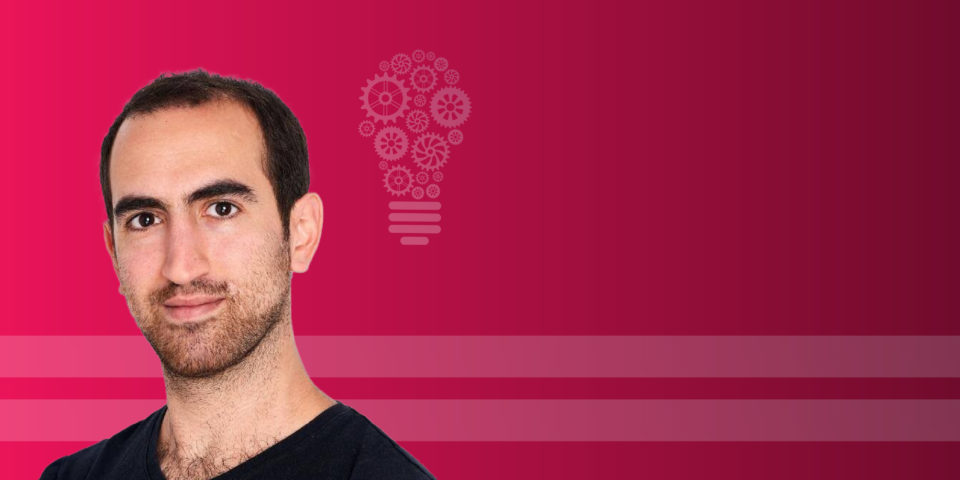On paper, entrepreneurship looks easy enough.
Social media and the press make it seem sexy and approachable.
Everyday we hear of a new startup getting millions of dollars in investment, and a riper one getting a glamorous IPO on the NYSE or Nasdaq.
But life isn’t so glorious and challenges aren’t discussed enough. I believe there are some things that every entrepreneur should know – things that aren’t taught enough when starting a business.
For that reason I blog. For that reason, I co-host a podcast. I want people to know the truth of what it’s really like, when you take out the fluff and glow.
There is a serious psychological and physical price that needs to be acknowledged. Starting and running a business is more stressful than you initially imagine or anticipate. Being an entrepreneur means a lot of things, both good and sometimes bad.
I sat down with Roee Kashi, the co-founder and CTO at Elsight, a solution provider of hybrid, AI-powered high-bandwidth connectivity solutions for stationary, portable, or actively mobile situational devices, for an honest discussion about real life entrepreneurship.
This post highlights his two cents on some core aspects.
Roee has been “in the game” for almost 13 years since founding the company, and as a tech founder, has a lot of valuable input to share when it comes to entrepreneurship.
On what being an entrepreneur is like:
Do not over-romanticize the idea of being an entrepreneur, it comes with an impulse you’ll need to learn how to restrain.
As an entrepreneur, you’re in a constant self-conflict of interests between your entrepreneurial part and your position in the company. Especially in the first years, we entrepreneurs tend to drift and do cool things we want to do, rather than the things we need to do which fit the company’s vision and roadmap.
An entrepreneur is good at taking calculated risks, trying new methods, dreaming big, and that’s a great toolbox to have.
But when you hit these small bumps along the road, carefully pick your problem-solving toolbox. If you’re a CEO or CTO for example, choose these toolboxes first before going to revolutionize the world with new innovative ideas and new products that will save the day. A company at growth needs a CEO that acts as a CEO and a CTO that acts as a CTO, and so on.
On focus:
“Focus.”
You probably heard that a lot – but what does it mean?
Your first big clients can mature and ramp up your product but might also drag you from the highway into side roads that might kick you out of the game.
It’s easy to fall into a “client pleaser syndrome” where you always feel you need to extend your solution to please your first client, but your vision and roadmap should be stronger and guide the way. Down the road, it’ll be the best solution for your client as it’s more sustainable and maintainable.
Focus is definitely the key to success, yet achieving it requires self-discipline and data-driven decision-making. Our brain is a genius tricky demon that will help you find all the right reasons for why to do stuff that doesn’t go along with your data. Usually, it’ll fall under the “strategic” definition.
So fight it, don’t abuse the term “strategic”. Not every company or person in the third or second degree of connection from your destination is strategic. Intuition is good, and so is impressing third parties, but it should get its own weight in data-driven decision-making metrics.
On employee feedback and objective criticism:
While building the team, growing, and structuring your company, you got to put your ego aside.
Being an entrepreneur doesn’t make you the most important person in your company, but the opposite.
As objectively as possible, map the things you’re good at. From this list, keep the things the company needs at this stage in order to grow, and only then consider what you like to do.
Are you the right person to manage the R&D team, or to act as CTO, or maybe Chief Architect, or Chief Product?
Are you the right person to act as the CEO, or VP of sales, or perhaps business development?
Naturally, at the very beginning, you will do the job of a dozen, but the difference lies in the way you frame it.
Define your multiple roles knowingly. It’s ok to be the CTO, VP R&D, Chief Product, and essentially, probably also the head of professional services, but it should be well defined to both you and your colleagues. VP of R&D and Product can, most of the time, have a conflict of interests between them, even if you wear these two hats.
On one hand, under the VP R&D hat, you want to re-factor, monitor, improve stability, test, and build a robust infrastructure that is scalable and highly available. On the other hand, the product “hat” might need to push for new features or fix important bugs that might seem minor to your other half.
Putting a spotlight on these conflicts between your multiple roles will help you improve your day-to-day decision-making, and make it easier to define your requirements to scale up your team.
On team and company culture:
The culture you set inbound reflects on the company’s outbound culture.
Show your gratitude and respect your team.
From work-life balance through open discussions which encourage dialog and criticism, to team management methods, your attitude to your business partners, colleagues, and employees will shape your company culture.

